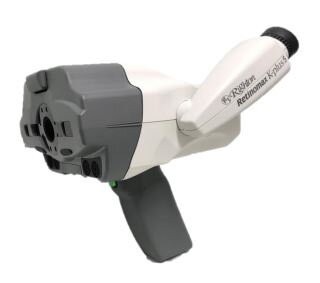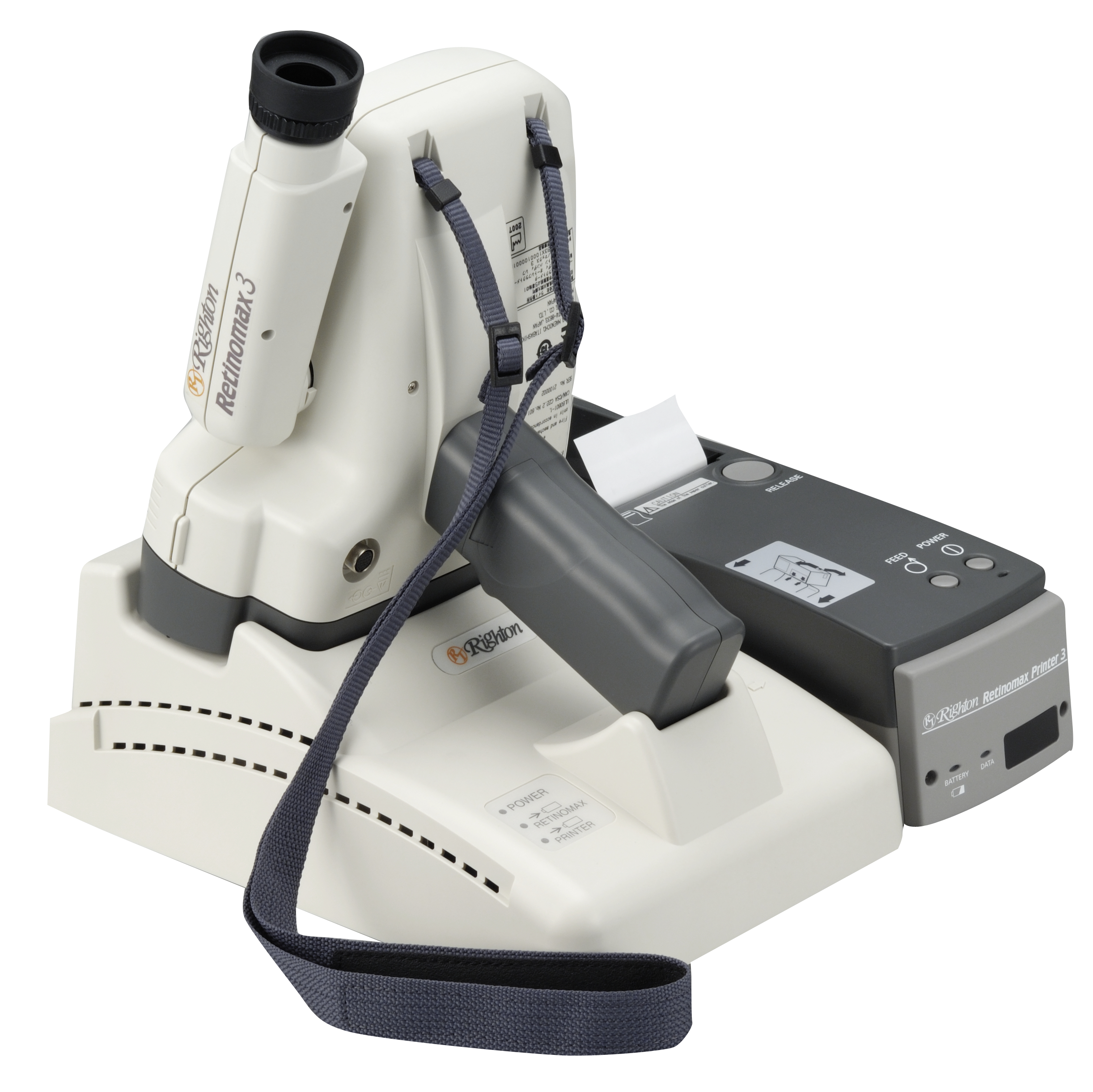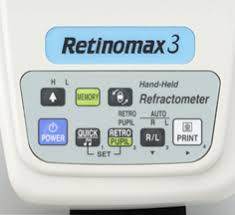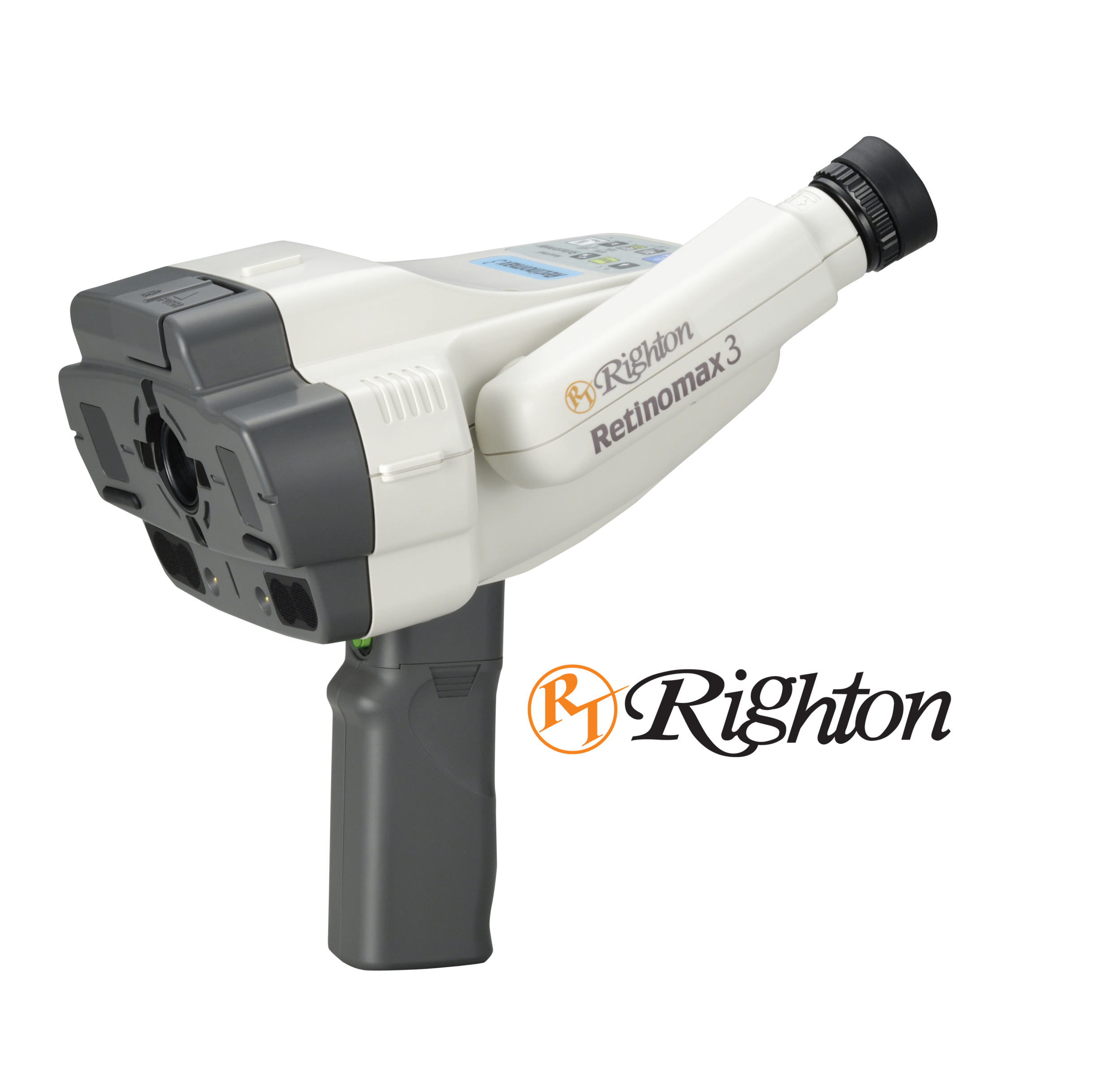


RIGHTON RETINOMAX K-plus Series 5 AUTO REFRACTOMETER / KERATOMETER
Righton Retinomax Series 5 + Keratometry
The Retinomax Series 3, the World’s Leading Handheld Refractor and Keratometer
The Retinomax 5 Series boasts all the same benefits as the 2 Series, plus an impressive collection of new features.
Lighter With Thinner Grip
Weighing just under one kilogram, the main body with battery is over 17% lighter for the K-plus 5 and 11% lighter for the Retinomax 5 than the conventional Retinomax Series models. The Retinomax Series 5’s center of gravity is in the grip, making the Series 5 feel much more lighter and balanced.
NEW Auto Quick Measurement
If no measurement is made within six seconds, the unit automatically enters Quick mode. Measurement is then taken in 0.07 seconds. In Auto Quick mode, “AQ” appears on printouts.
NEW Auto Pupil Measurement, Display, And Printout
The unit measures pupil size automatically displays the X (horizontal) size on the monitor, and prints out the XY (horizontal and vertical) sizes separately. Results can be used in checking accommodation, mydriasis, ADIE, and Horner-associated syndromes.
RIGHTON RETINOMAX-5 AUTO REFRACTOMETER
Righton Retinomax Series 5
The Retinomax Series 5, the World’s Leading Handheld Refractor
The Retinomax 5 Series boasts all the same benefits as the 2 Series, plus an impressive collection of new features.
Lighter With Thinner Grip
Weighing just under one kilogram, the main body with battery is over 17% lighter for the K-plus 3 and 11% lighter for the Retinomax 5 than the conventional Retinomax Series models. The Retinomax Series 5’s center of gravity is in the grip, making the Series 5 feel much more lighter and balanced.
NEW Auto Quick Measurement
If no measurement is made within six seconds, the unit automatically enters Quick mode. Measurement is then taken in 0.07 seconds. In Auto Quick mode, “AQ” appears on printouts.
NEW Auto Pupil Measurement, Display, And Printout
The unit measures pupil size automatically displays the X (horizontal) size on the monitor, and prints out the XY (horizontal and vertical) sizes separately. Results can be used in checking accommodation, mydriasis, ADIE, and Horner-associated syndromes.


